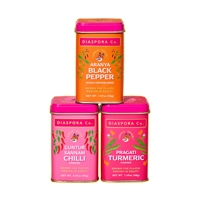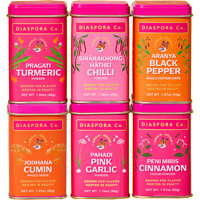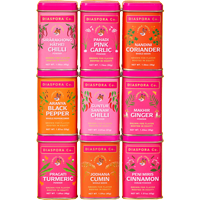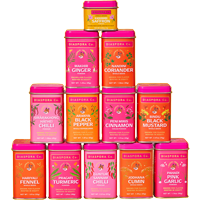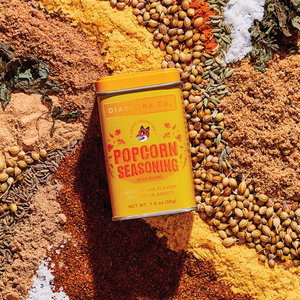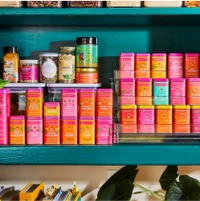
There are many mysteries surrounding one of India’s most beloved rice dishes, but foremost among them is — How did the potato come to feature in it?
Manzilat Fatima emerges from the kitchen adjacent to the small rooftop restaurant she runs in south Kolkata, a cheery smile on her face. She places a casserole on my table, and a mouth-watering aroma wafts from the pot filled with long-grained rice, a couple of juicy mutton chunks embedded in it. A rotund chunk of golden-brown potato sits lightly on the yellow bed of rice.
“The potato is the hallmark of any Kolkata-style biryani,” Manzilat tells me. Do I notice a whiff of pride in her voice? It would not be surprising, because it was Manzilat’s great-great-grandfather, Nawab Wajid Ali Shah, who is said to have first introduced the proverbial potato to biryani, when he was dethroned by the British and exiled to Kolkata (then Calcutta) from his kingdom of Avadh in 1856, a year before India’s First War of Independence.
“The potato is the hallmark of any Kolkata-style biryani.” Manzilat Fatima
But why this novel improvisation? In his book, The Travelling Belly, food blogger Kalyan Karmakar echoes a popular theory: “The money was scarce. The spices were toned down, and the biryani of Kolkata became more subtle than that of Lucknow and had a lower meat-to-rice ratio. The cooks had a stroke of brilliance. Meat was expensive, so they decided to add potatoes instead to give contrast to the rice.” Even though there is little proof to support it, this narrative has been endorsed by many, including veteran journalist Vir Sanghvi.
But not everyone agrees. In fact, Manzilat opposes it vehemently. “Nawab Wajid Ali Shah received a pension of Rs. 12 lakhs per annum from the Britishers and back in those days, it was enough not only to maintain his large retinue, but also to indulge in some of the princely excesses. Why, he had the money to start the first zoo in Kolkata,” she says.
A more probable theory is that in the mid-19th century, potato cultivation was low in India. The tuber had just been introduced in eastern India as a root crop by British traders. (Even though the Portuguese had brought potatoes to India, hardly anyone ate this new vegetable. The British then began an aggressive campaign to get Indians to grow and eat potatoes, to further their colonial ambitions). This campaign had made it an exotic vegetable and the Nawab, being a connoisseur of fine dining, had asked his chefs to integrate the potato into biryani as an innovative twist.
Whatever the truth behind the curious case of potatoes in Kolkata biryani, this example shows the versatility of the one-pot meal: its ability to travel from one corner of the country to another, and to adopt a completely new ingredient to evolve into a novel variant. Biryani has mastered this trick time and again, ever since it first arrived in India.

Layers of marinated meat and rice cooked with spices lend biryani its signature complexity
There are controversies here as well, about how this scrumptious one-pot wonder reached Indian shores. The word biryani is derived from the Persian word ‘birian’, which means ‘fried before cooking’ and ‘birinj’, the Persian word for rice. Tracing this etymological thread, it is widely believed that biryani originated in Persia (or modern-day Iran) and was brought to India by the Mughals in the 16th century. This is when the traditionally bland and subtle Persian biryani is believed to have gone through a makeover with the aromatic spices and exotic marinades in the royal kitchens of the Mughals.
The origin of biryani has also been attributed to Mumtaz Mahal, the beautiful Mughal empress (in whose memory her husband emperor Shah Jahan would later build the Taj Mahal). Legend goes that on one of her customary visits to the army barracks, Mumtaz found that the Mughal soldiers looked malnourished. She is said to have ordered the chefs to whip up a balanced diet of meat and rice. The result was biryani, with semi-cooked meat and unwashed, ghee-fried rice placed in layers in earthen pots and slow-cooked over wood fire.
Another story pushes back the origins of biryani in India to 1398, when Tamerlane, the Turko-Mongol conqueror, invaded the north-western frontiers of the subcontinent. The wartime diet of his fearsome battalion is believed to have been an earthen pot full of rice, spices and meat that would be buried in a hot pit, and dug up after a few hours to be served to the soldiers.
Over the ages, the biryani pot has travelled with nobles, warriors and pilgrims to far-off places and assimilated regional ingredients to assume a local identity.
The riddle gets even more complex with K.T. Achaya’s monumental research volume, A Historical Dictionary of Indian Food, reporting a mention of onnu soru, which was a wholesome dish of rice cooked in meat stock, in ancient literary texts. Achaya writes that though the word pilav, pulao or pallao comes from Persian and the Arabic, “yet it would appear to have found its way long ago into both Sanskrit and early Tamil literature of the third to sixth centuries.”
So, does that make biryani, which many consider a richer version of pulao, an Indian affair? Well, yes and no.
![]()
Biryani purists maintain that when rice is cooked in meat stock, the grain is completely transformed as the starch is absorbed by the liquid. And that, they argue, is a pulao and not a biryani, which is devoid of starch as rice and meat are cooked separately and layered together afterwards.
However, K.T. Achaya points out in his book that though the term pulao or palao is centuries older than biryani, Ain-i-Akbari, a treatise written by Emperor Akbar’s court historian, Abu'l Fazl, show little distinction between the two. Achaya writes that Abu’l Fazl’s magnum opus, written in 1590, segregates royal Mughal cuisine in three categories, where the “second group consisted of preparations of rice with meat, like palaos, biryanis, shulla and shurba.”
Things take a further turn with Colleen Taylor Sen’s description of a dish called shulla in her book, Feasts and Fasts: A History of Indian Food. In her book, Sen reconstructs a recipe that Abu’l Fazl had detailed in his chronicle. “A portion of shulla had a high 3:1 meat-to-rice ratio. Meat was first fried in ghee in a pot for five minutes. Water, salt, chickpeas and cinnamon were added to it and simmered for ten minutes. Some more spices were stirred in before adding the rice in the pot.”
This sounds and (likely smells) like biryani!
So, the debate continues, unabated.
![]()

The delicately flavoured Hyderabadi biryani is among the most popular versions of the dish
The story of the evolution of biryani into its regional variants is just as fascinating, and much less controversial. The biryani trail stretches most of the length and breadth of the country, with the rice, seasonings, condiments and accompaniments served with the dish varing widely in different parts of the country.
I remember the biryani I once had at my friend Ibrahim’s place. Ibrahim’s family, from the small, close-knit Dawoodi Bohra community, had migrated to Kolkata around 140 years ago from Surat in Gujarat. Along with a very progressive outlook and a unique sartorial style, they had also carried their culinary legacy, the highlight of which was the Bohri biryani. I was delighted to find the biryani laced with potatoes, like the ones in Kolkata’s eateries, but this delightful, home cooked dish left a spicier and a more fragrant trail on my palate. “We use nutmegs and fried chillies,” Ibrahim’s mother told me. “But the highlight is the potato.” The Bohras have included this versatile pantry staple in their biryani since the time the Portuguese started cultivating the crop along India’s western coast in the late 17th-century, Ibrahim informed me. A defining feature of the Bohri-style biryani, which is usually prepared with chicken or goat meat, is the meticulous preparation of birista (or golden fried onions), a tradition they carried over to Karachi, along with the potatoes in their biryani.
With just a few innovative tweaks of ingredients, seasonings and techniques, the unassuming bowl of rice is thus metamorphosed into a pan-Indian delicacy.
Over the ages, the biryani pot has travelled with nobles, warriors and pilgrims to far-off places and assimilated regional ingredients to assume a local identity. Take for example the Hyderabadi biryani, arguably the most beloved variant, the credit for which is attributed to Asaf Jah. He was a trusted lieutenant of Emperor Aurangzeb in many of his military campaigns in the Deccan. In 1712, he was appointed as the viceroy of Hyderabad, and was titled Nizam of Hyderabad by Farrukhsiyar, the sixth of Aurangzeb’s successors. The Hyderabadi biryani is said to have evolved in the royal kitchens of the Nizam in both ‘pakki’ and ‘kachchi’ style. The ‘pakki’ style involves a meticulous arrangement of semi-cooked rice and meat in layers in a sealed vessel before putting it on steam. Kachchi-style biryani follows a more difficult method by assembling raw, marinated meat and uncooked rice in a sealed earthen pot, which is then allowed to cook over a slow flame.
While fried onion impart a crisp, caramelised flavour, the use of lime juice and yoghurt lends a tangy touch to the unique flavour profile of Hyderabadi biryani, which also integrates some of the spices and seasonings of local Telangana cuisine such as cloves and cardamom powder. Whichever way it is prepared, Hyderabadi biryani is traditionally served with mirchi ka salan (a lightly spiced, creamy curry of green chillies and peanuts) and a bowl of raita.
As the dish threaded its way through the hinterlands of Deccan along trade routes, it spawned several hyperlocal avatars. The Malabar biryani and Thalassery biryani of the coastal belt of North Kerala often replace meat with fish or prawns and sport a brownish tinge as the fried onions seep their juices into the rice, which is sprinkled with mint and coriander leaves and garnished with cashew nuts and raisins. My personal favourite is the Thalassery variant that uses short-grained, flavourful jeerakasala rice instead of the long-grained north Indian basmati rice. The locally grown rice blends seamlessly with famed Malabar spices such as Tellicherry pepper powder, star anise and fennel seeds.

A boiled egg is a fixture in the Dindigul biryani, which enjoys widespread popularity in Tamil Nadu
In the neighbouring state of Tamil Nadu, the small town of Dindigul is known for pepper cultivation. The Dindigul biryani is fired up with pepper, which perfectly balances the tangy flavour introduced by the use of curd and lime juice. At a distance of 350 km from Dindigul, in the municipality town of Ambur, dried chilli paste and coconut milk feature in the delectable Ambur biryani, cooked in dum pukht style (in dough-sealed containers with few spices over a low flame). Redolent of the pronounced flavour of locally-harvested jeeraga samba rice layered with mutton chunks, the Ambur biryani is strongly reminiscent of Lucknow biryani, but the accompaniment can be a surprise: a bowl of bracingly sour eggplant curry!
With just a few innovative tweaks of ingredients, seasonings and techniques, the unassuming bowl of rice is thus metamorphosed into a pan-Indian delicacy. The food aggregator Swiggy identifies biryani as their annual food trend year after year, with more than 300,000 new users entering this delivery platform with their orders for chicken biryani. Perhaps that is why food historian Mohsina Mukadam says, “While [it] may not have originated here, I believe that biryani, with its spices and flavours, is a completely Indian innovation.”






